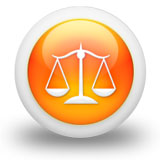We need your consent to use the individual data so that you can see information about your interests, among other things. Click "OK" to give your consent.
ASTM E1066/E1066M-19
Standard Practice for Ammonia Colorimetric Leak Testing
Translate name
STANDARD published on 1.5.2019
The information about the standard:
Designation standards: ASTM E1066/E1066M-19
Note: WITHDRAWN
Publication date standards: 1.5.2019
SKU: NS-953381
The number of pages: 5
Approximate weight : 15 g (0.03 lbs)
Country: American technical standard
Category: Technical standards ASTM
The category - similar standards:
Annotation of standard text ASTM E1066/E1066M-19 :
Keywords:
chemical based leak testing, colorimetric leak testing, leak testing, smoke leak testing ,, ICS Number Code 17.180.20 (Colours and measurement of light)
Additional information
| Significance and Use | ||||||
|
6.1 This method is useful for locating and measuring the size of gas leaks either as a quality-control test or as a field-inspection procedure. It can be used to test critical parts or containers that will hold toxic or explosive gases or liquids or as a quick test for other containers. |
||||||
| 1. Scope | ||||||
|
1.1 This practice covers the testing of large single- and double-walled tanks, pressure and vacuum vessels, laminated, lined- or double-walled parts, complex piping systems, flexible containers (such as aircraft fuel tanks), glass-to-metal seals in hybrid packages, and systems that inherently contain or will contain ammonia (such as large tonnage refrigeration systems and fertilizer storage systems). 1.2 This method can be used on piping, valves, and containers with welded, fitted, or laminated sections that can be sealed at their ends or between their outer and inner walls and that are designed for internal pressures of 34.5 kPa [5 psig] or greater. 1.3 Basic procedures are described based on the type of inspection used. These procedures should be limited to finding leakage indications of 4.5 × 10− 12 mol/s [1 × 10−7 Std cm 3/s]1.4 Units—The values stated in Std cm3/s or mol/s are to be regarded separately as standard. The values stated in each system are not necessarily exact equivalents; therefore, to ensure conformance with the standard, each system shall be used independently of the other, and values from the two systems shall not be combined. 1.5 This standard does not purport to address all of the safety concerns, if any, associated with its use. It is the responsibility of the user of this standard to establish appropriate safety, health, and environmental practices and determine the applicability of regulatory limitations prior to use. 1.6 This international standard was developed in accordance with internationally recognized principles on standardization established in the Decision on Principles for the Development of International Standards, Guides and Recommendations issued by the World Trade Organization Technical Barriers to Trade (TBT) Committee. |
||||||
| 2. Referenced Documents | ||||||
|
We recommend:
Updating of laws
Do you want to be sure about the validity of used regulations?
We offer you a solution so that you could use valid and updated legislative regulations.
Would you like to get more information? Look at this page.




 Cookies
Cookies
